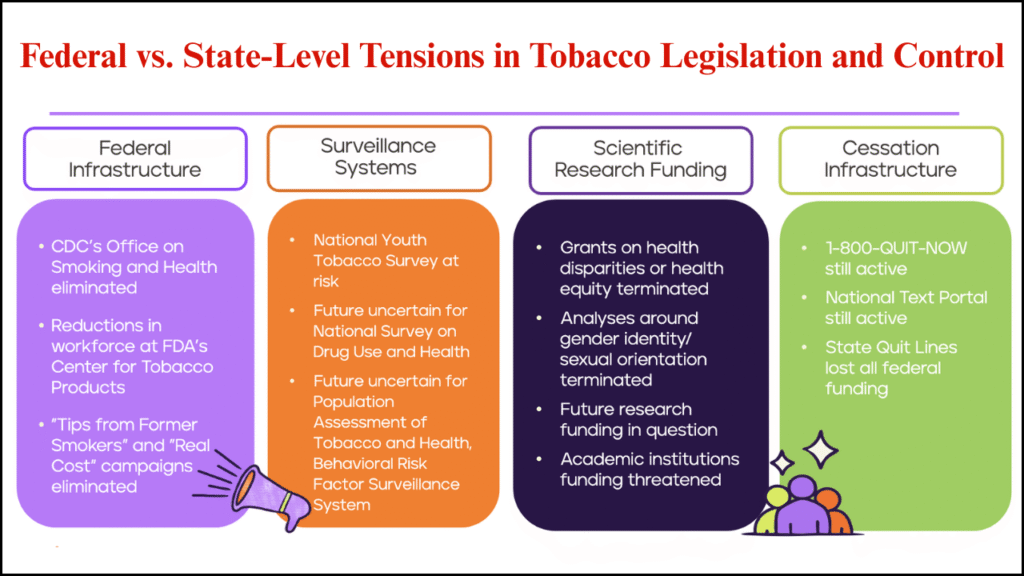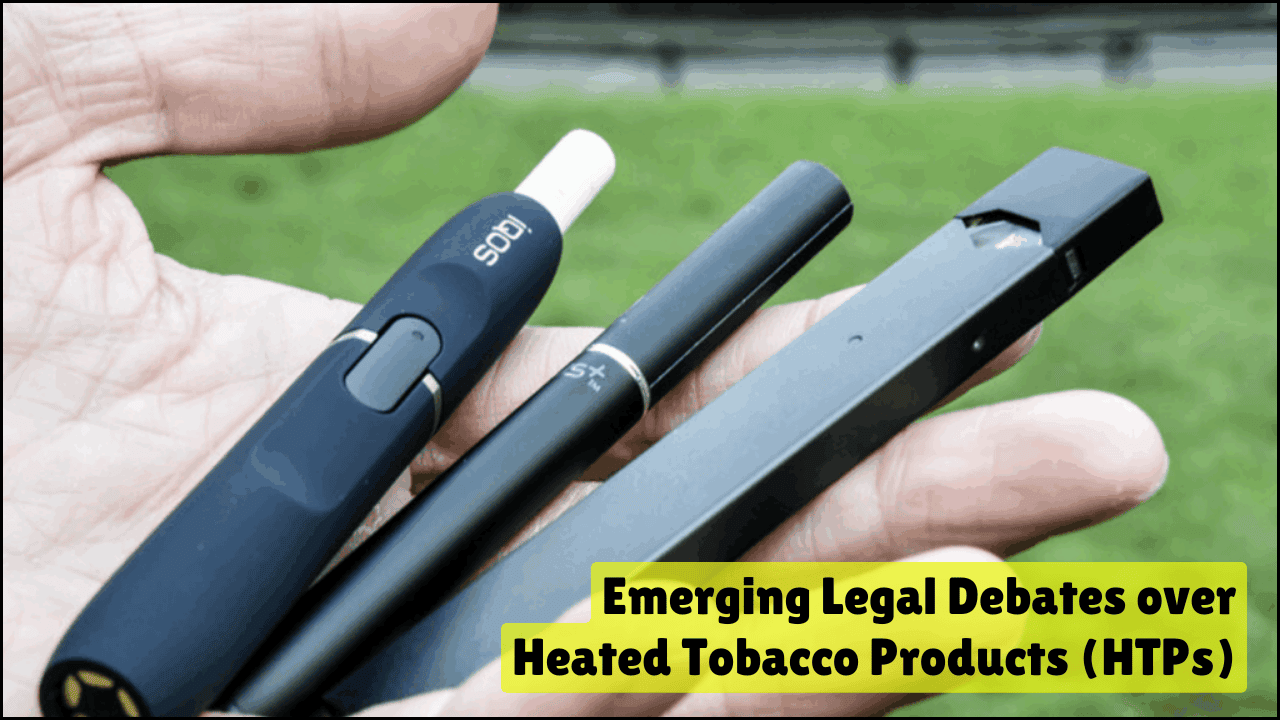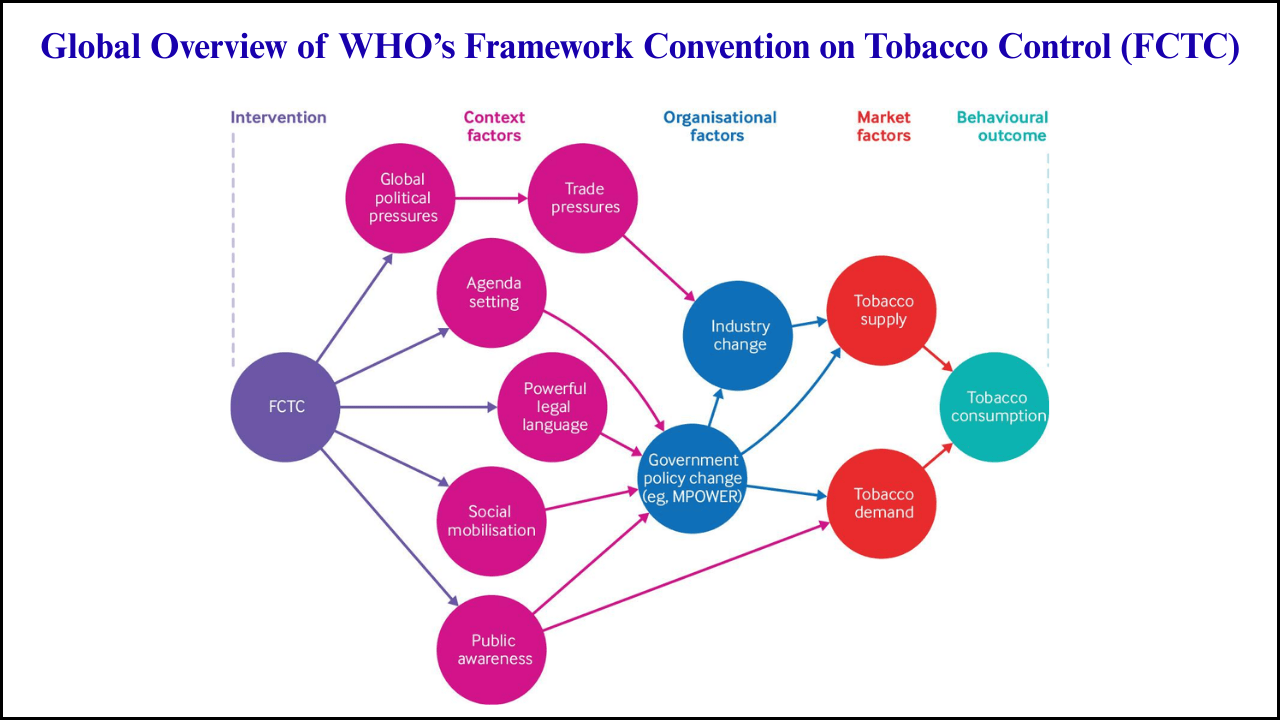
Tobacco legislation in the United States has always been shaped by the interplay between federal authority and state-level governance. Federal agencies set nationwide health standards, regulate product safety, and restrict marketing, while states exercise their own powers to protect public health within local contexts. Conflict arises when federal guidelines clash with stricter state measures, or when state economic interests, such as tobacco farming, challenge federal public health priorities. The debate over control reflects broader tensions about federalism, constitutional powers, and the balance between public health and individual choice.
Table of Contents
Historical Background of Tobacco Legislation
- Federal action began in the early 20th century with restrictions on advertising and warning labels.
- States simultaneously developed excise taxes and public smoking laws.
- The 1964 Surgeon General’s Report marked a turning point, spurring both federal and state-level anti-tobacco initiatives.
- Industry lobbying often exploited jurisdictional divides to delay strong regulations.
Key Federal Agencies in Tobacco Control
- Food and Drug Administration (FDA): Regulates manufacturing, marketing, and distribution.
- Centers for Disease Control and Prevention (CDC): Provides research, surveillance, and public health campaigns.
- Federal Trade Commission (FTC): Oversees advertising practices and claims.
- Congress: Enacts nationwide legislation, including taxation and warning mandates.
State-Level Role in Tobacco Control
- States levy excise taxes, which vary widely across jurisdictions.
- State legislatures pass clean indoor air laws, regulating smoking in public spaces.
- State attorneys general negotiated the 1998 Master Settlement Agreement (MSA), holding tobacco companies financially accountable.
- Some states invest settlement funds in prevention programs, while others divert them to unrelated budget needs.
Points of Tension Between Federal and State Policies
- The federal government establishes minimum regulatory standards, but states often push for stricter controls.
- States with heavy tobacco production resist strong restrictions, citing economic harm.
- Preemption clauses in federal laws sometimes limit state authority.
- Legal disputes arise when state measures, such as flavored tobacco bans, exceed federal rules.
Comparison of Federal vs. State Tobacco Control Powers
| Aspect | Federal Authority | State Authority |
|---|---|---|
| Taxation | Federal excise tax applied nationwide | State excise taxes vary widely |
| Advertising Restrictions | National bans on TV/radio ads | Local restrictions on billboards, retail displays |
| Product Regulation | FDA regulates nicotine levels, labeling, and packaging | States may ban flavored products or enforce stricter standards |
| Public Smoking Laws | No universal federal ban in workplaces/restaurants | States decide on indoor/outdoor smoking bans |
| Litigation Power | Congress enacts liability protections or penalties | States initiate lawsuits (e.g., Master Settlement Agreement) |
| Health Campaigns | CDC runs national awareness programs | States run localized prevention campaigns |
Economic Interests and Legislative Conflicts
- Tobacco remains a vital crop in states like North Carolina, Kentucky, and Virginia.
- State legislators often defend industry jobs and tax revenues, opposing federal crackdowns.
- Federal health agencies prioritize long-term health savings, while states focus on immediate economic trade-offs.
- The tobacco lobby employs different strategies at each level, lobbying Congress for broad protections and state officials for favorable local laws.
Case Studies of Federal-State Clashes
- Flavored Tobacco Bans: Several states, including Massachusetts and California, imposed bans, while federal rules lagged, leading to legal battles.
- E-Cigarette Regulation: The FDA took years to issue clear guidance, allowing states to fill the void with differing restrictions.
- Tobacco Age Limits: Some states raised the legal age to 21 before Congress eventually passed a national “Tobacco 21” law in 2019.
- Settlement Funds Misuse: While federal authorities encouraged health program spending, states often redirected funds to budget deficits.
Selected State Innovations vs. Federal Response
| State Action | Federal Response |
|---|---|
| Massachusetts bans flavored tobacco | Industry lawsuits challenge legality; federal courts weigh conflicts |
| California restricts e-cigarette sales | The FDA later implemented broader regulation, but slower |
| New York raises smoking age to 21 | Federal “Tobacco 21” passed in 2019 |
| Florida diverts settlement funds to non-health projects | Federal agencies criticize but cannot enforce the allocation |
Public Health Outcomes of Divergent Policies
- States with higher tobacco taxes show significantly lower smoking rates.
- Comprehensive smoke-free laws reduce secondhand smoke exposure and hospitalizations.
- Federal baseline laws ensure some level of uniformity, but disparities remain across states.
- Rural, tobacco-dependent states tend to have weaker laws and higher smoking prevalence.
Arguments Supporting Federal Primacy
- Uniformity prevents industry from exploiting weaker states.
- National policies provide consistent protection regardless of residence.
- Federal oversight ensures scientific standards for product safety.
- Cross-border issues, like online sales, require centralized regulation.
Arguments Supporting State Autonomy
- States can act faster than federal agencies in response to new health threats.
- Local governments understand unique economic and cultural contexts.
- State innovations often inspire federal policy shifts (e.g., Tobacco 21).
- Flexibility allows stronger protections in progressive states.
Pros and Cons of Federal vs. State Dominance
| Dimension | Federal Control Advantages | State Control Advantages | Challenges of Each |
|---|---|---|---|
| Consistency | Uniform standards nationwide | Tailored to local needs | Risk of patchwork laws |
| Speed of Action | Thorough but slow processes | Quick adaptation to new issues | Risk of uneven enforcement |
| Industry Influence | Centralized lobbying target | Strong local political pressure | Lobbying can dilute laws |
| Public Health Impact | Broad campaigns reach all citizens | Local programs may be more effective | Gaps remain in weaker states |
The Role of Courts in Resolving Conflicts
- Judicial rulings often decide whether federal law preempts stricter state measures.
- Courts balance the commerce clause authority with states’ police powers over public health.
- Litigation outcomes shape how far states can push beyond federal standards.
- Example: Challenges to flavored tobacco bans highlight judicial influence.
Future Directions in Tobacco Control
- Likely expansion of federal nicotine reduction mandates in cigarettes.
- Continued state-level experimentation with flavored product bans and retail licensing.
- Greater coordination is needed to align settlement fund usage with health objectives.
- Federal-state partnerships may emerge for regulating new products like synthetic nicotine.
In Summary
Tobacco legislation in the United States reflects a constant negotiation between federal authority and state sovereignty. Federal agencies bring uniformity and nationwide protection, while states provide flexibility and innovation. Conflict arises from economic interests, legal disputes, and differing public health priorities. The future of tobacco control will likely depend on a balance—federal frameworks setting minimum standards, with states free to implement stronger protections. Effective collaboration between both levels of government remains essential to reduce tobacco use and safeguard public health across the nation.






